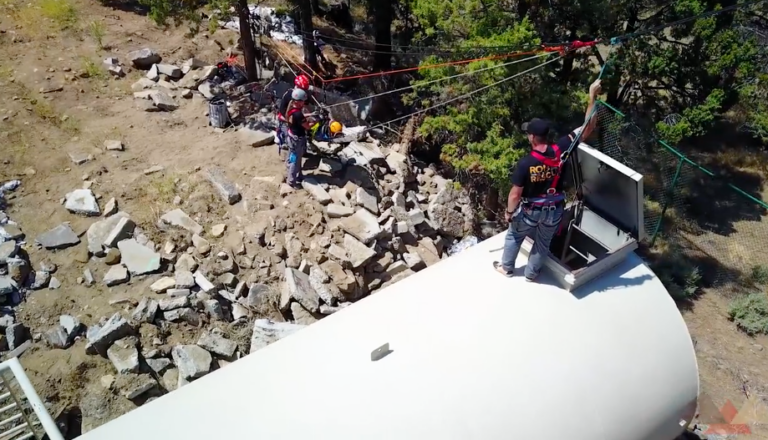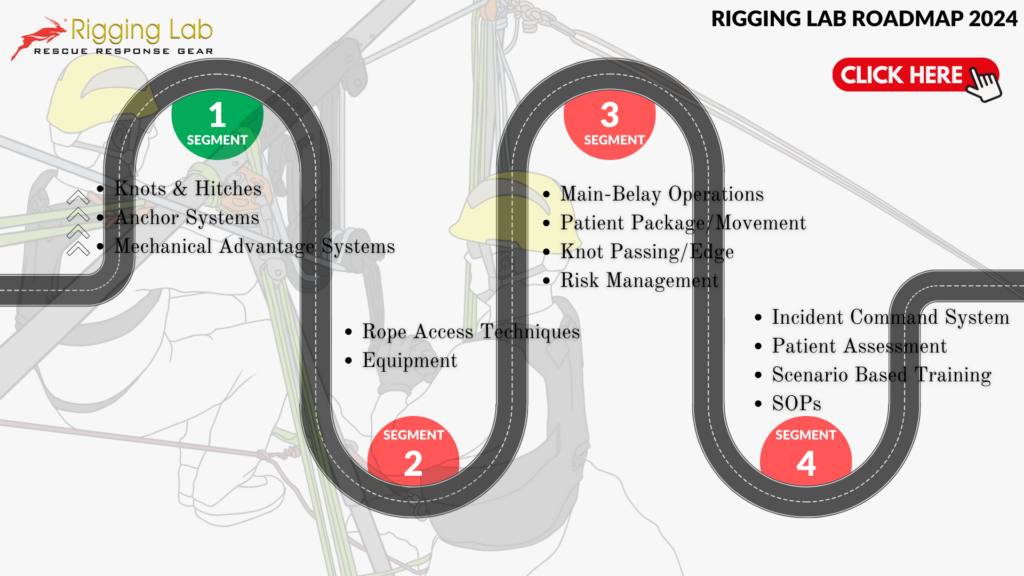When it comes to rescue operations, understanding the mechanics, force dynamics, and rigging strategies is not just beneficial, but potentially life-saving. A critical component in these operations are the Elevated Anchors, categorized as “edge mitigation tools”. These are essentially horizontal systems designed to raise and then lower, mitigating edge trauma especially in spot situations like “holes”, where ground level raising and lowering isn’t effective.
Our recent ventures into the analytical side of rope rescue have taken us from the chalkboard into the practical world of the lab. We have moved beyond the realm of theoretical calculations, delving into practical applications which allow us to understand the forces at play within a backtie system, particularly in contrasting the behaviour of compression and tension members. This study has benefitted us immensely, as we come closer to merging classroom mathematics with practical lab experiments to understand rescue systems better.
Highlighting the integral aspects of this study: the performance of different materials, precision in angles for optimal load distribution, a focus on the effects within a single plane before moving to more complex ones, and the evaluation of load and stress on the system, this empirical approach enriches the principles taught academically, simultaneously enhancing practical rescue techniques.
Further exploration in the Rigging Lab led us to delve into the use of aerial ladders in rescue scenarios, as part of Elements of Physics. Unfolding more than just textbook principles, this practical exploration has led us to understand the class one lever mechanics of an aerial ladder, the 11-to-1 ratio of an extended aerial ladder, and the impact of resultant forces at different angles. Transitioning from simple techniques to complex methods has helped us to better align forces with the compression member and minimize stress on the fulcrum.
As we continue to merge theory with practice, it’s clear that the rigging techniques and strategies learnt not only enrich our understanding of the fundamental equipment but pave the way for more effective rescue operations. Our hands-on trials and experiments highlight the criticality of angle precision, optimal material choice, and load distribution, reinforcing the importance of these concepts in real-life situations. By bridging the gap between theoretical calculations and tangible practices, we continue to explore better ways to raise and lower, ensuring safety, stability, and efficiency in all rescue scenarios.
In addition to elevated anchors and rigging techniques, another crucial aspect of successful rescue operations is effective communication. Clear and concise communication between team members is essential in ensuring a smooth and safe operation. This includes using standardized hand signals, proper radio protocols, and consistent terminology to avoid confusion or misinterpretation.
Moreover, it’s important for rescuers to regularly practice and review communication protocols to maintain a high level of proficiency and coordination during actual rescue situations. Without proper communication, even the most well-planned rescue operation can quickly become chaotic and dangerous.
In conclusion, the study and application of elevated anchors, rigging techniques, and effective communication all play integral roles in successful rope rescue operations. By constantly honing our knowledge and skills in these areas, we can better prepare ourselves for any potential rescue scenario and ensure the safety of both rescuers and victims. So, it is crucial to continuously learn and improve in these areas to effectively handle any challenges that may arise during a rescue operation. With regular training, practical application, and a deep understanding of the mechanics behind these techniques, we can strive towards more efficient, safe, and successful rescue missions. So, let’s keep exploring, experimenting, and learning to continuously improve our abilities as rescuers. Our dedication to continual growth will ultimately lead us towards becoming better prepared for any emergency situation that comes our way.
Peace on your Days
Lance










